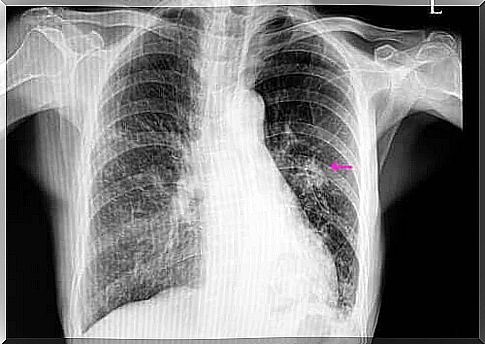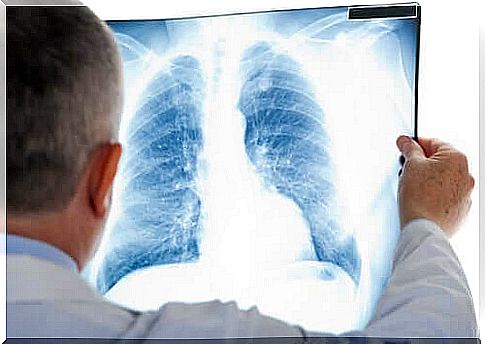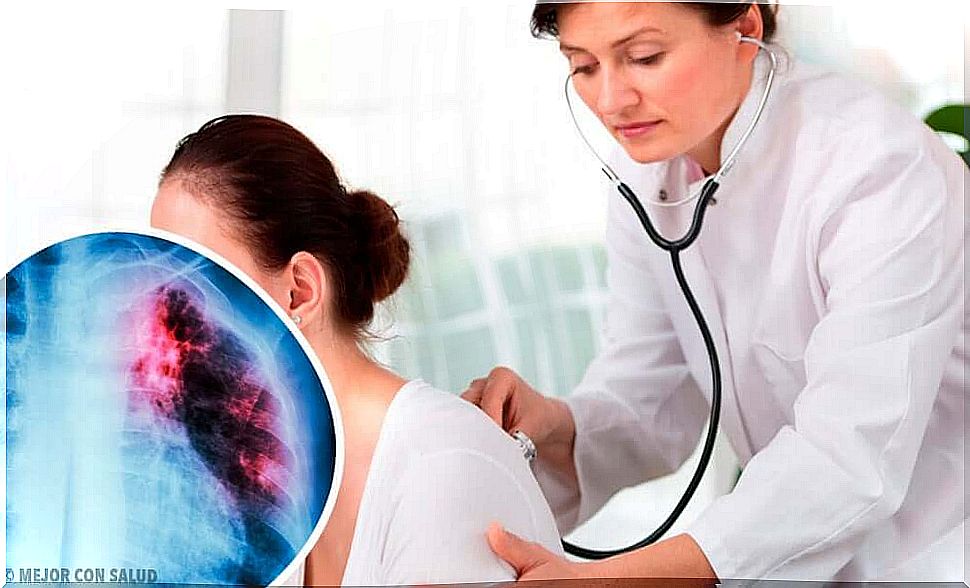What Is A Lung Nodule?
The main cause of lung nodule is lung infection. Although it should be excluded as long as it is not a cancerous process.

When we hear about a lung nodule, the first thought that comes to our mind is cancer. However, even though the two conditions are often linked, it can be a mild process.
A lung nodule is a mass that occurs in the lung that can measure between 5 and 30 millimeters. It is an increasingly frequent disease, which is thought to affect around 0.2% of the population. However, almost 60% of the nodules are benign.
Moreover, the causes of this disease are very varied, ranging from an infection to a tumor process. Most of them are discovered accidentally during an axial tomography or x-ray.
It is important to diagnose this situation at an early stage in order to avoid complications and rule out anything that could be more serious. Therefore, in this article we tell you all about the lung nodule and the symptoms it triggers.
What are the causes of a lung nodule?
As we have already mentioned, a lung nodule is a mass that appears in the lung. For this reason, the causes can be various. Most often, they are secondary to infection, whether by bacteria, fungi or parasites.
Among the infectious causes, it should be noted that lung nodules are common in people affected by tuberculosis. Although its incidence has decreased, it is still a relatively common disease.
Neoplastic cause
Currently, the first thing to rule out with a lung nodule is that it is a cancerous process. Indeed, lung cancer is one of the most common because of, among other things, smoking.
In these cases, the nodules usually look irregular on the x-ray, with poorly defined edges. In addition, they are generally smaller than benign nodules and are associated with certain risk factors such as:
- Be a smoker
- Be over 35 years old
- Have suffered from a previous cancer
- Have a nodule that has grown rapidly in a few months
However, it is important to know that not all neoplastic lung nodules are malignant. There are also some benign tumors, although they are much less common than malignant ones.

Other causes of lung nodule
There are other diseases that can be the cause of this lung damage. For example, some autoimmune processes such as Wegener’s granulomatosis or rheumatoid nodule. Both are rare.
On the other hand, in some people, the lung nodule may appear as a result of trauma, a metabolic disease called amyloidosis, or after the onset of a bronchial cyst.
How is lung nodule diagnosed?
To diagnose the lung nodule and find out its cause, it is essential to first take a medical history of the person. Indeed, it is necessary to know if she suffered from tuberculosis or was exposed to certain infections or infected subjects.
In addition, one should also know whether he is a smoker or not. Numerous studies have shown that a large part of the nodules are carcinogenic and are linked to smoking.
Once this is clear, it is necessary to perform some imaging tests to locate the nodule. In addition, the images make it possible to observe certain characteristics such as shape and size. These aspects are fundamental to distinguish a benign nodule from a possibly malignant nodule.
The most commonly used are chest x-rays and CT scans. In order to find out the exact cause of a lung nodule, biopsies are sometimes taken to analyze the tissue that forms it.

What is the appropriate treatment?
Treatment will depend on the cause of the nodule. First, when the origin is infectious, treatment may not be helpful. Or antibiotics or antifungals may be prescribed to stop the infection.
When the cause is unclear, treatment is directed according to the risk of cancer. For example, in younger non-smokers, whose nodule does not appear to be malignant, only periodic examinations may be necessary. This is to check whether the nodule is changing or growing.
On the other hand, if there is a risk of cancer, the most important thing is to perform the biopsy. If it is indeed carcinogenic, surgery may be helpful to remove it. However, when surgery is not possible, chemotherapy or radiotherapy is chosen.
Finally, in conclusion, it is essential to re-emphasize the negative influence of tobacco. Indeed, we must be aware of the risk involved and carry out regular medical examinations in order to be able to diagnose this type of pathology at an early stage.









